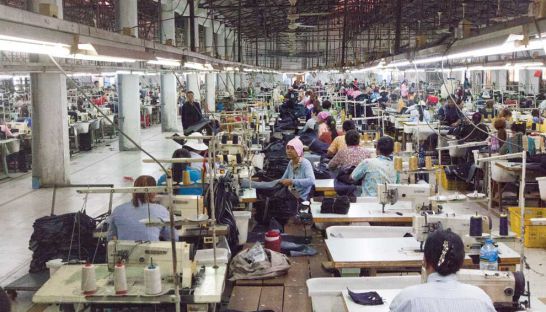Garment factory data revised
Garment factory data revised
The Ministry of Commerce reclassified over 120 inactive garment and footwear factory entries as closed or suspended during the first quarter of 2016, the International Labour Organization (ILO) said yesterday, adding a new twist to the ongoing debate on whether there are signs that garment manufacturers are pulling out of Cambodia due to rising wages and a relatively unproductive, restive workforce.

“During the first quarter of 2016, the ministry became aware that a number of factories had been inactive for months, and in some cases had closed down, but had not provided official notice to the ministry and thus had not been recorded as such in the database. The ministry therefore reclassified 122 garment and footwear factories as being closed or in a temporary closure,” the ILO said in its latest Cambodian Garment and Footwear Sector Bulletin.
It said the ministry data showed that 12 new garment and footwear factories opened during the first quarter, indicating a net closure of 110 factories during the period, reducing the total number of registered exporting factories to 589 as of end-March 2016.
Ministry of Commerce officials could not be reached last night to comment on the validity of the ILO’s statements.
While the figures cited in the bulletin provided no indication of the cause or duration of factory inactivity, they would appear to support claims of a recent surge in factory closures.
On August 22, the Garment Manufacturers Association in Cambodia (GMAC) announced that based on its membership data a total of 70 garment and footwear factories had shut down so far this year, with only 20 new factories opening. The industry body attributed the rash of closures to political uncertainty, labour unrest and a lack of competitiveness, a reference to low productivity and higher costs resulting from a rise in factory worker wages.
GMAC secretary-general Ken Loo told the Post last week that the closures were further evidence that international garment and footwear manufacturers were relocating their production lines to more cost-effective investment destinations.
“We have been saying for many years that Cambodia is not competitive and that companies will divest,” he said of the factory closures. “There has been a decline in incoming investors, as well as our existing investors pulling out. I believe this is a trend that will continue for the rest of the year.”
However, the ILO bulletin presented a very different outlook for Cambodia’s $6 billion garment and footwear sector, arguing that the reclassification of the 120 factories was not representative of the industry’s health.
“This fall appears to be largely a statistical artefact arising from a correction of the record, rather than an increase in the rate of real closures,” the bulletin said. “Export figures and employment figures suggest ongoing growth in the industry.”
The bulletin noted that out of 37 new investment projects approved by the Cambodian Investment Board (CIB) during the first quarter, 22 were in the garment and footwear sector with a total investment of $86 million. While this represented a slight decline in new investment as a percentage of overall foreign direct investment (FDI) during the quarter, the sector still recorded 20 per cent growth compared to the same quarter in 2015.
The ILO interpreted this data as a sign the while the garment and footwear sector was growing rapidly, investment in other sectors was increasing even faster.
“Investment in the garment and footwear sector is growing at a solid pace, but investment in other sectors is growing even more rapidly, as FDI inflows to Cambodia diversify,” the bulletin said.
It added that total employment in the sector continued to increase during the first quarter of the year, reaching nearly 630,000 people, a 5.3 per cent increase over the same period in 2015.













